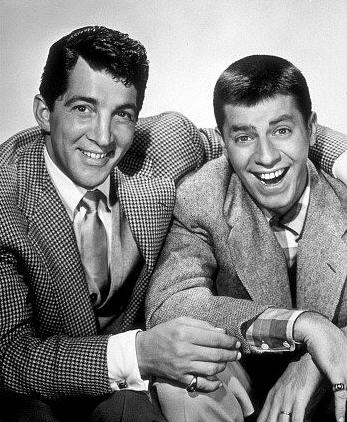Jerry Lewis Goes Silent at 91
By • August 21, 2017 0 914

When news came that Jerry Lewis had died at the age of 91, on Aug. 20 in Las Vegas, there was a veritable explosion of homages, descriptions, criticism, debate about the man, about his personality, his legacy and gifts and his penchant for irascibility, insults and unpleasantness.
Turns out, there were in fact, and sometimes fiction — and certainly in psychological terms and in terms of his impact and importance in the stream of the history of American comedy — more than one and probably ten kinds of Jerry Lewis.
The first, though, and be it said with very little sentimentality, he was unforgettable. And he will remain so at least as long as things stream, make their way to YouTube or people watch old movies in the wee hours of the morning for a laugh and a memory.
In life and profession, Lewis, gangly, bug-eyed at will, high-pitched as a really loud silent movie, dangled through pretty much all of the common threads of not only American comedy, but American show business. You can find his beginnings in vaudeville (his parents were club and road performers), in an early mugger-hugging phase as a teen and in his copacetic hookup with the supremely laid-back Dean Martin, appearing in nightclubs together and television, followed by 1950s movies stardom.
Lewis’ screaming, quasi-clumsy innocent and very much unable to sit still or shut up persona provide a contrast to Martin’s bemused, off-handed romantic catnip for the ladies. Martin was so smooth, you could slide a soft tomato off his back without getting it scuffed. Lewis could hurt a tomato from a mile away.
They came from invisible territory — Irvington, New Jersey, for Lewis; Steubenville, Ohio, for Martin — and they first appeared together at the Glass Hat nightclub, according to the records in Manhattan, followed by a place called the Havana Madrid. Nightclubs were always a part of the Lewis life, and the Martin life, for that matter. They’re a part of the lore of comic show business. Today, it’s standup that tickles the fancy of younger audiences and is also the source of most comedic talent that doesn’t come from Saturday Night Live.
When they hit the movies, Martin and Lewis, Lewis and Martin, got bigger than life its own self: “At War with the Army,” “The Caddy,” “Artists and Models” (one of the models was Anita Ekberg), “Hollywood or Bust” and so on. But after a while, the relationship between the two soured, even though Lewis adored Martin and his languid ease, of which Lewis had not an iota. But it was Lewis who was getting or hogging the attention, and not with all due pleasantries, at, fittingly, the Copacabana.
Lewis got what he wanted — independence and a status in many places as an auteur — with films like “The Bellhop,” “The Delicate Delinquent,” “The Geisha Boy,” “Cinderfella” and, most notably, “The Nutty Professor,” a kind of Jekyll-and-Hyde bit of craziness which is nothing less than hilarious. Eddie Murphy, years later, did his own version with the same title, but it was the buck-toothed, thick-glassed professor suffering a very loud hangover in front of his students that you can catch on YouTube and laugh your eyebrows off with.
The solo Lewis was a high point which he never achieved again. American film critics never took him seriously, but, odd as it sounds, the French cineastes loved him and were indeed reminded of old American classic film glory, which they wrote theses about.
Lewis did belong in an American tradition that included the likes of Buster Keaton, Chaplin and the Keystone Cops, which later transformed into movies starring the Bowery Boys, the Marx Brothers, Abbott and Costello and … Martin and Lewis. Today’s club- and SNL-trained comics are left with one part of Lewis heritage, a penchant for purely American style infantilism (Adam Sadler is a particular example).
Lewis in public — he was in Washington for a road-show performance where he played the devil in “Damn Yankees” — could be short-tempered and impatient, as he displayed in a press conference for the show. But he was never less than fascinating and honest about his insecurities, as well as his talent.
He was, let’s face it, manic in his gifts, which could border on the insane and even menacing. His face was not naturally made of rubber, he pushed his emotions and his feeling out of the skin.
All comedians, unless they have only one shtick, tend to be good actors. Hence, the famous saying: “tragedy is easy, comedy is hard.” In that he resembled the silent comics, resembled Jack Benny (see what Lewis does as a bellboy holding down the fort in “The Bellboy”), was followed by Robin Williams and did it himself in “The King of Comedy,” in which he played a talk-show host stalked by an aspiring comic played by the very unfunny Robert De Niro.
He was also a giant of charity with his support of the Muscular Dystrophy Association, for which his telethons raised billions since they began in 1966.
His characters seem always to be less than uncommon, with small gifts and big desires that turned into clumsiness, rage, gigantic passions for unattainable romance, ability and status, more bouts of clumsiness, pratfalls, out and out Munch screams, a wacked-out dance where none of the parts fit.
And even now, we remember laughing, really loud.

